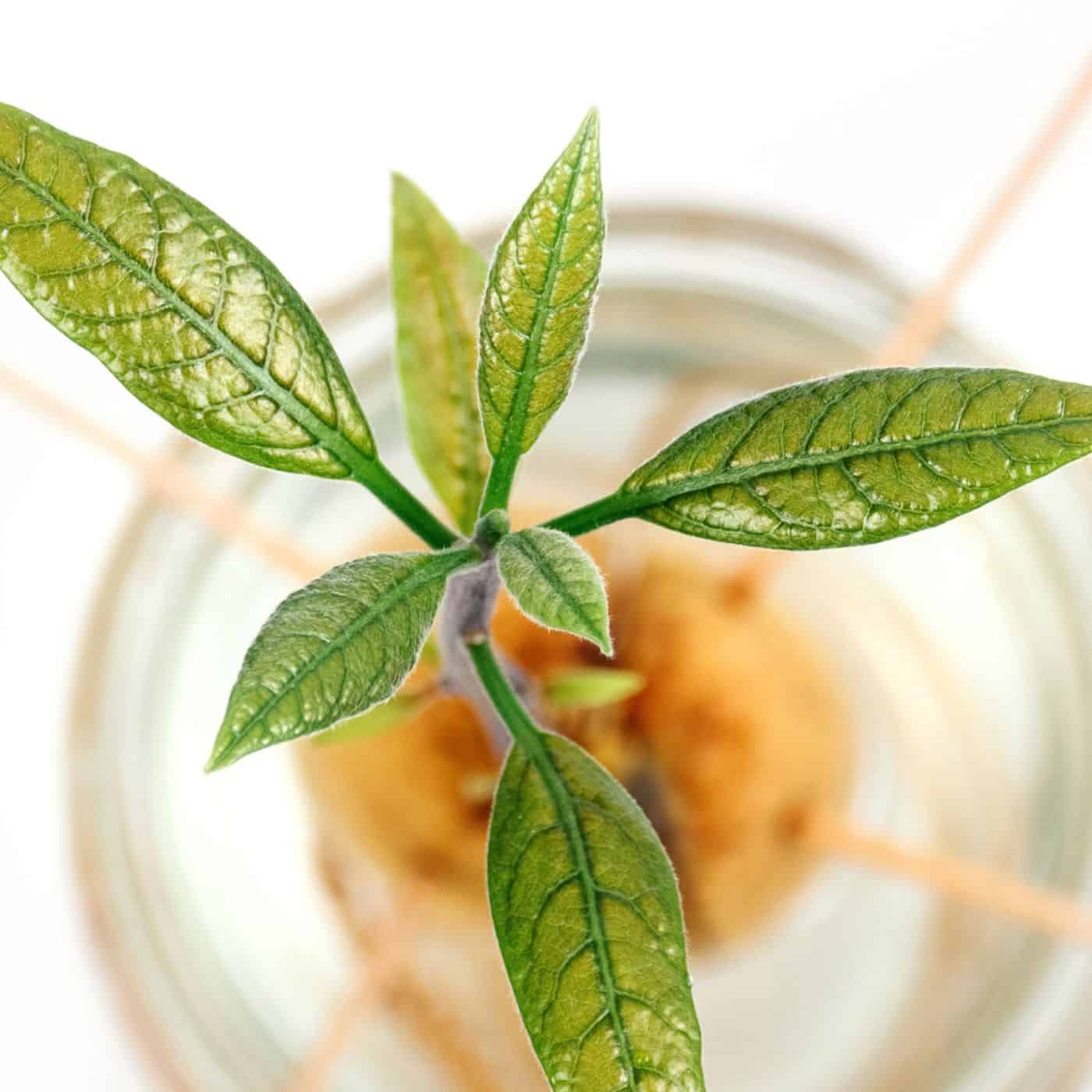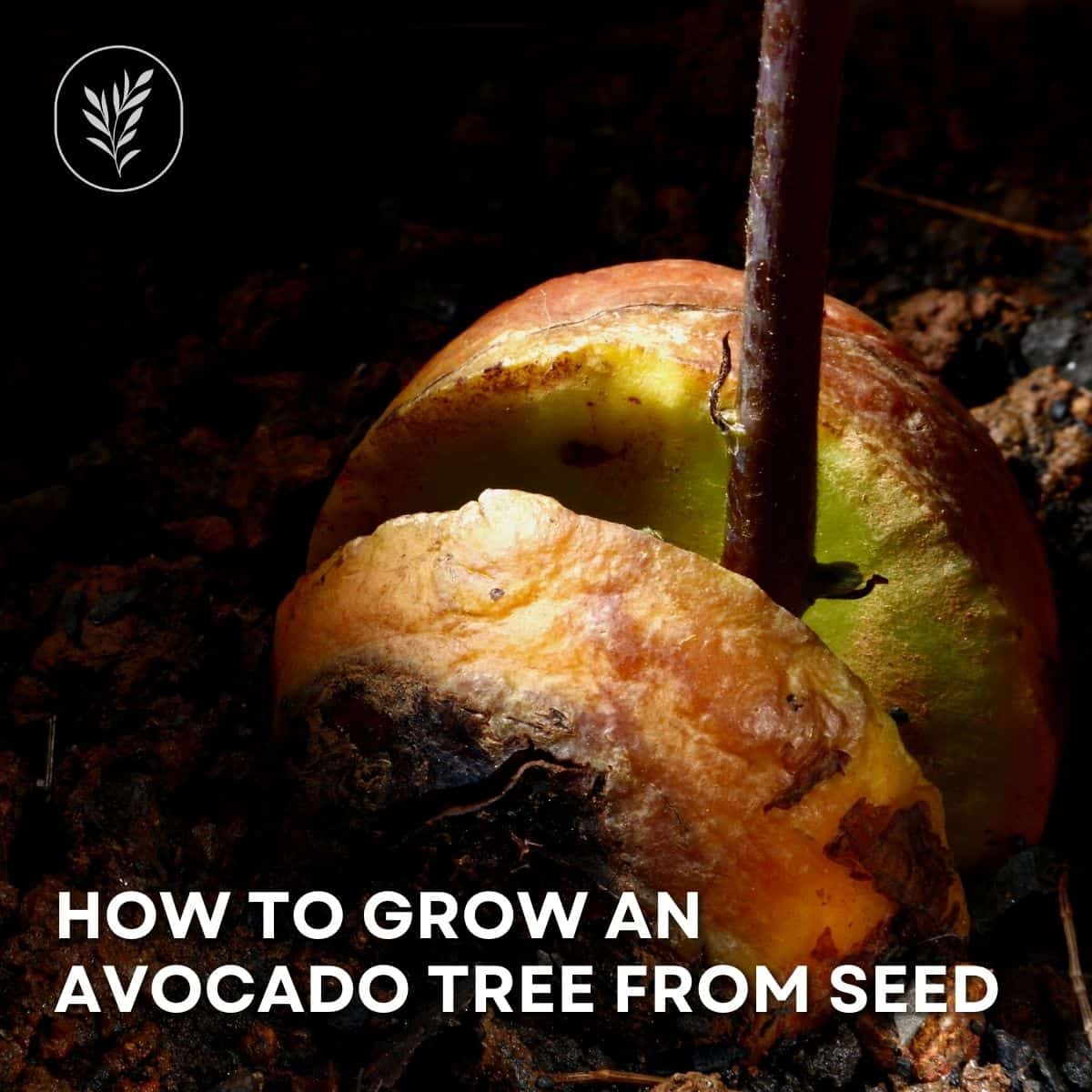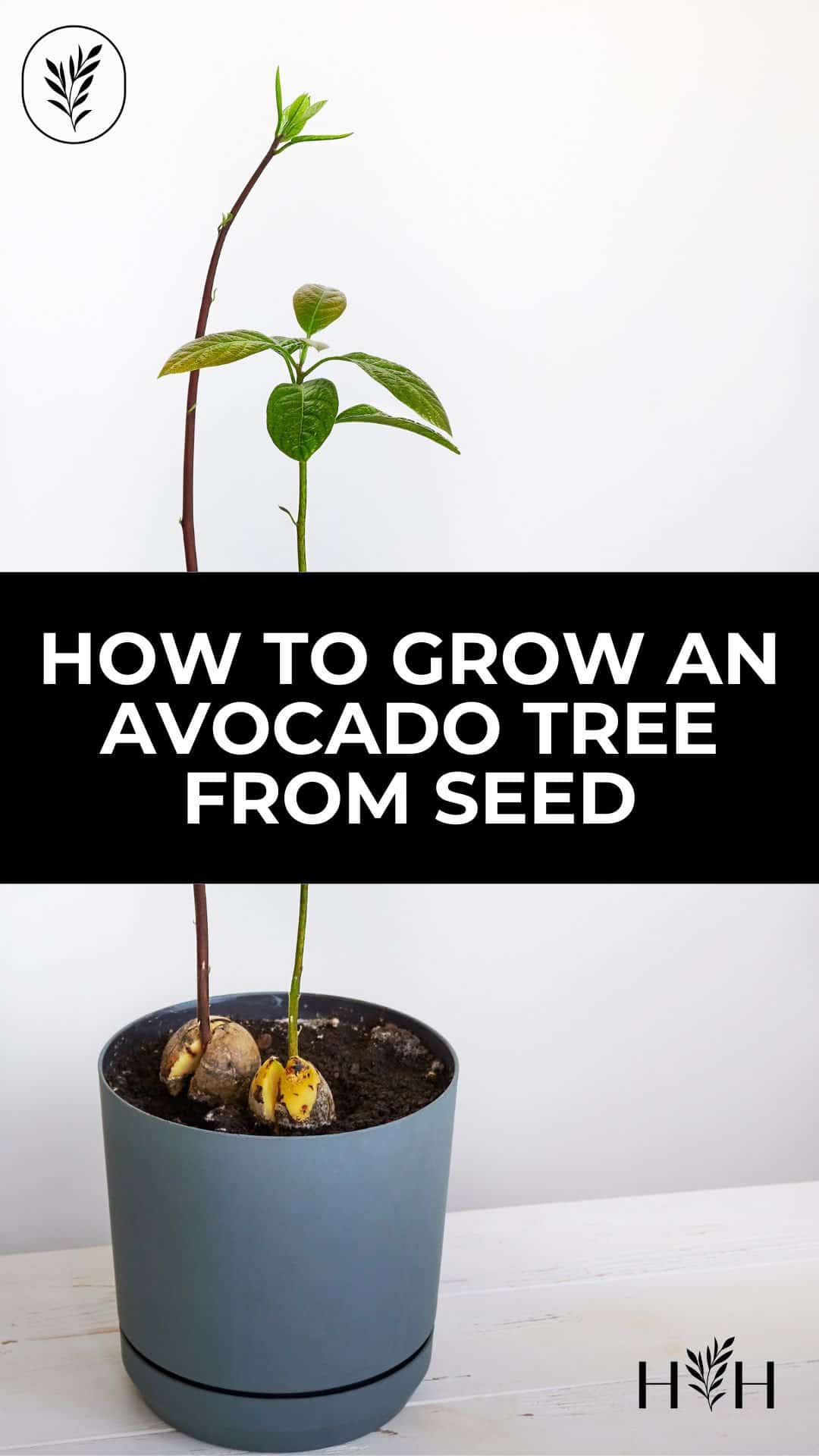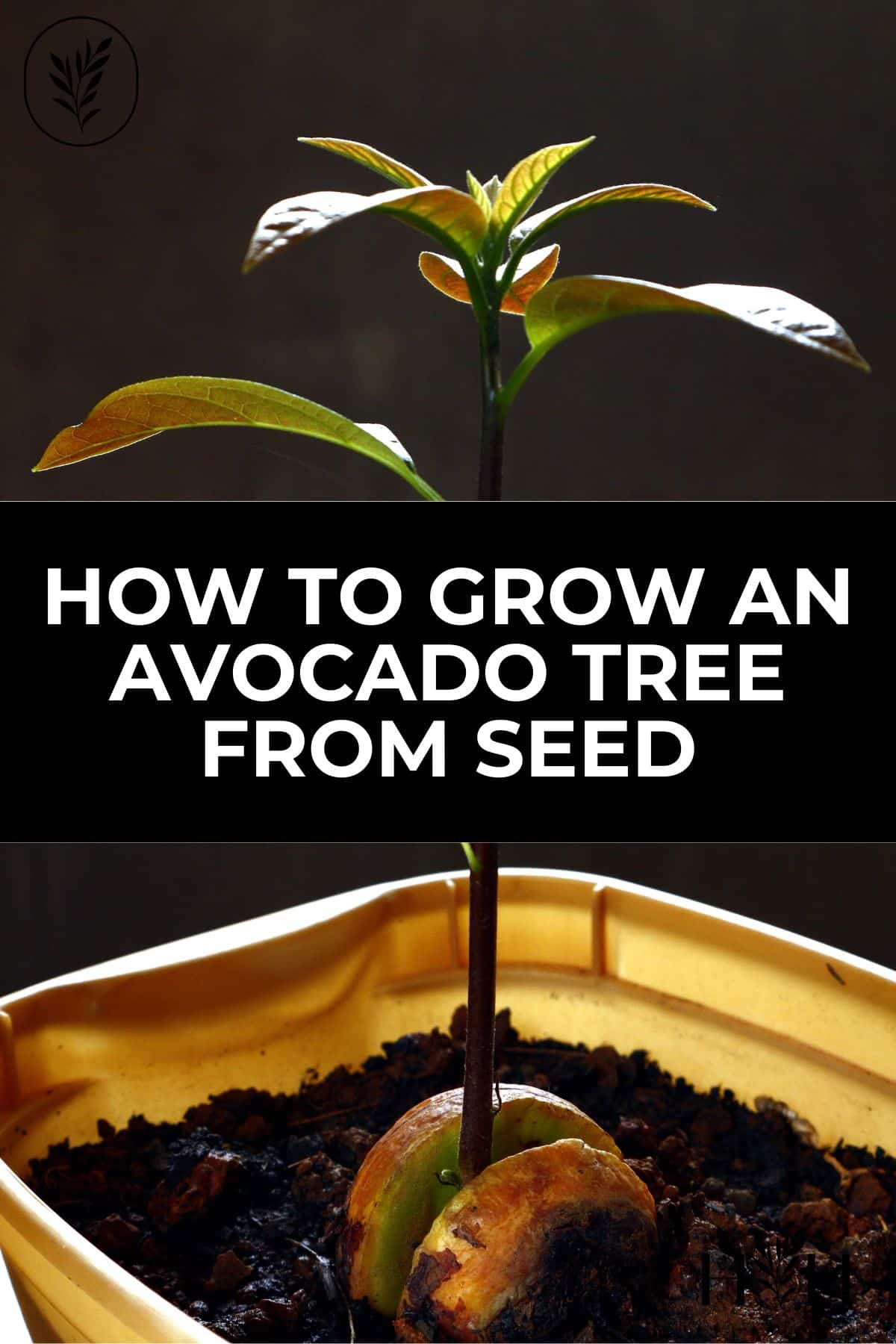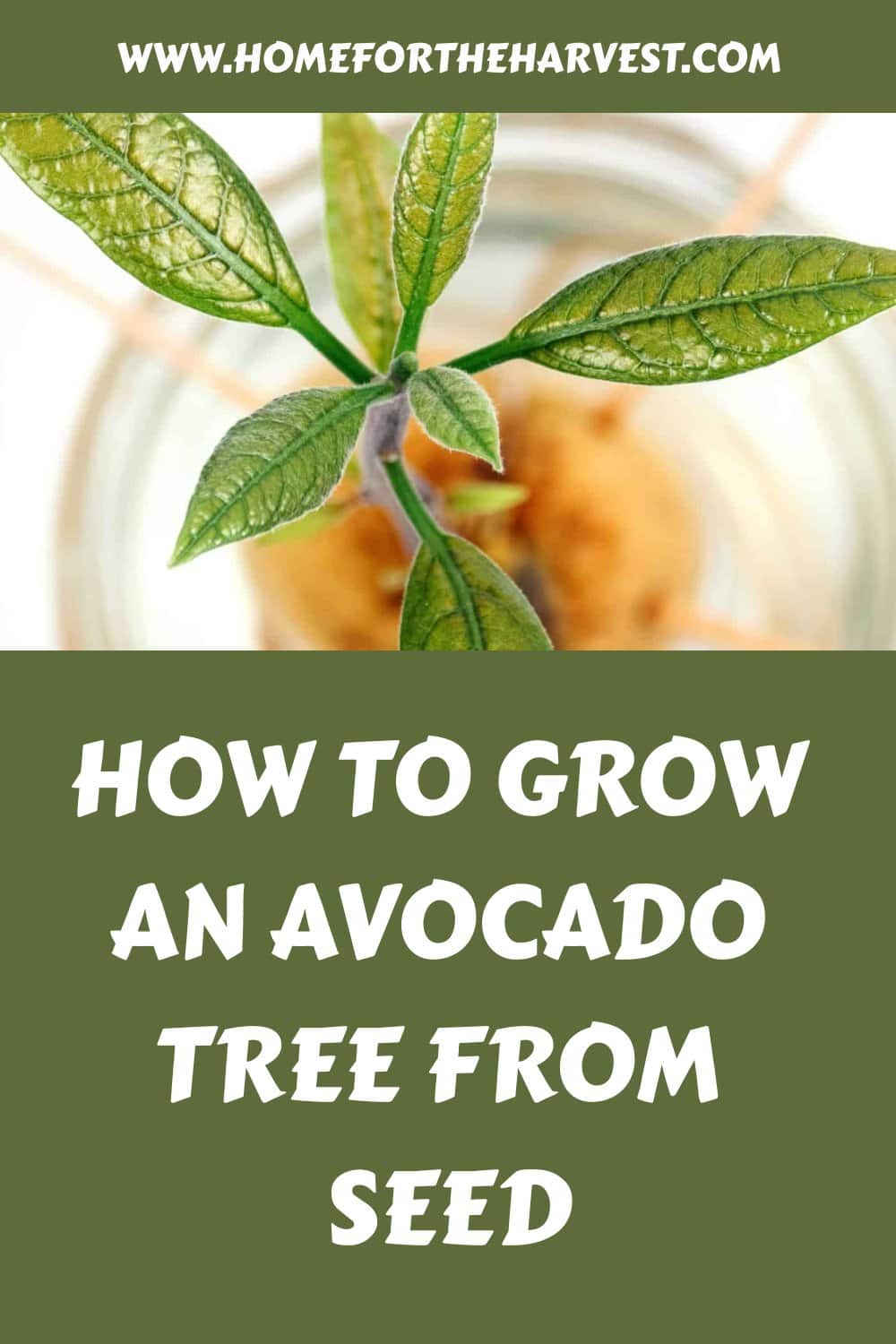Growing an avocado tree from seed can be a fun and rewarding experience. Whether it’s the thrill of watching something grow or just being able to pick fresh avocados, growing an avocado tree is easier than you think. From planting the seed all the way to harvesting avocados, we have put together this guide on how to grow an avocado tree from seed so that anyone can do it with ease.
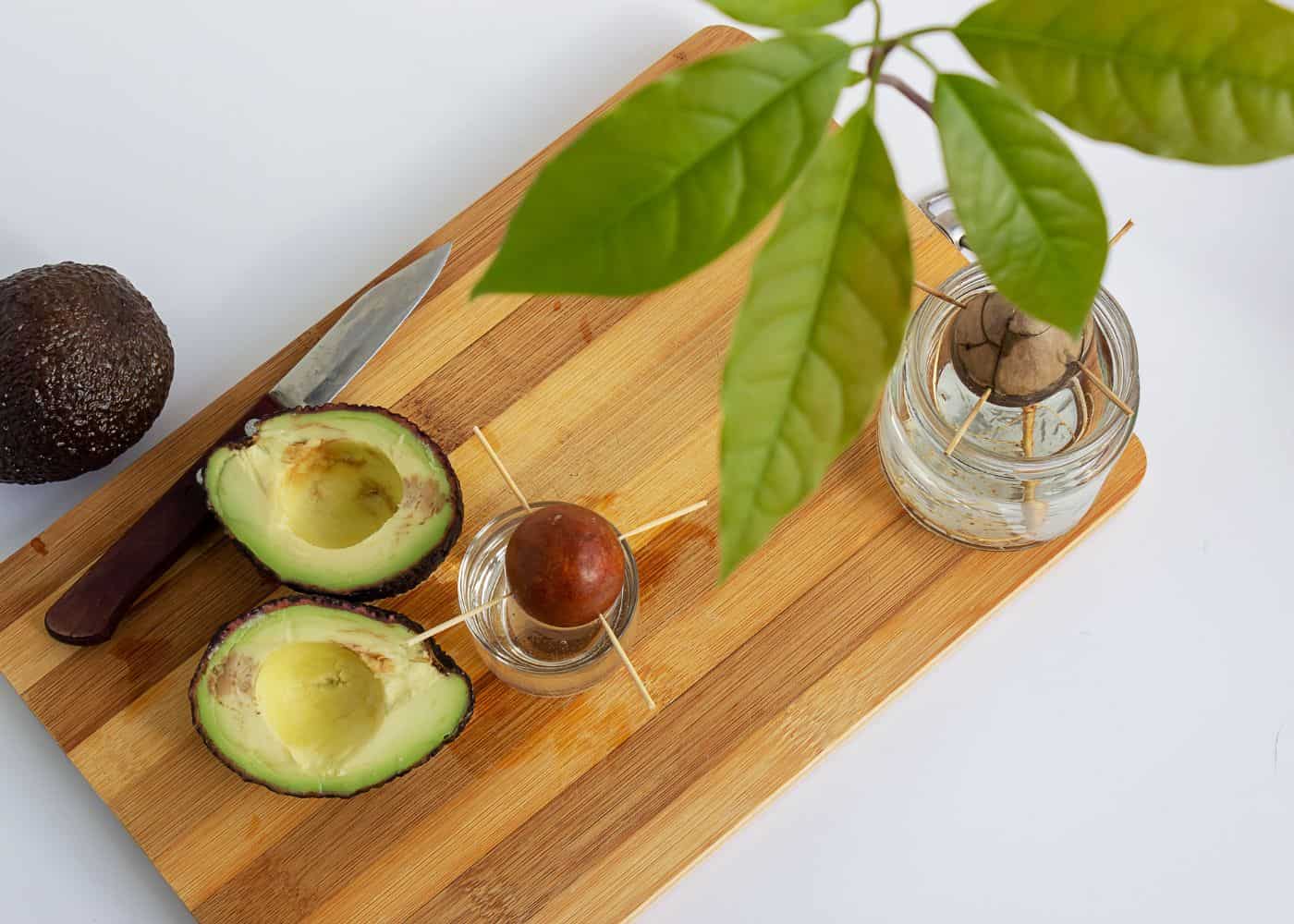
How to grow an avocado tree from seed
Growing an avocado tree from seed is such a fun gardening project! The big pits can be sprouted into a little baby seedling tree. If you live in a warm climate, you can eventually plant your avocado outdoors, and in cooler spots, you can keep it as a houseplant for a few years.
While growing avocado trees from seed is certainly fun, its not the best option if you’re planning on creating your own avocado orchard you can reliably harvest from. For that, it’s best to go to the nursery and buy trees of a desired cultivar. If you would like to grow a specific variety (like Hass), the desired variety can often be grafted onto the rootstock you grow.
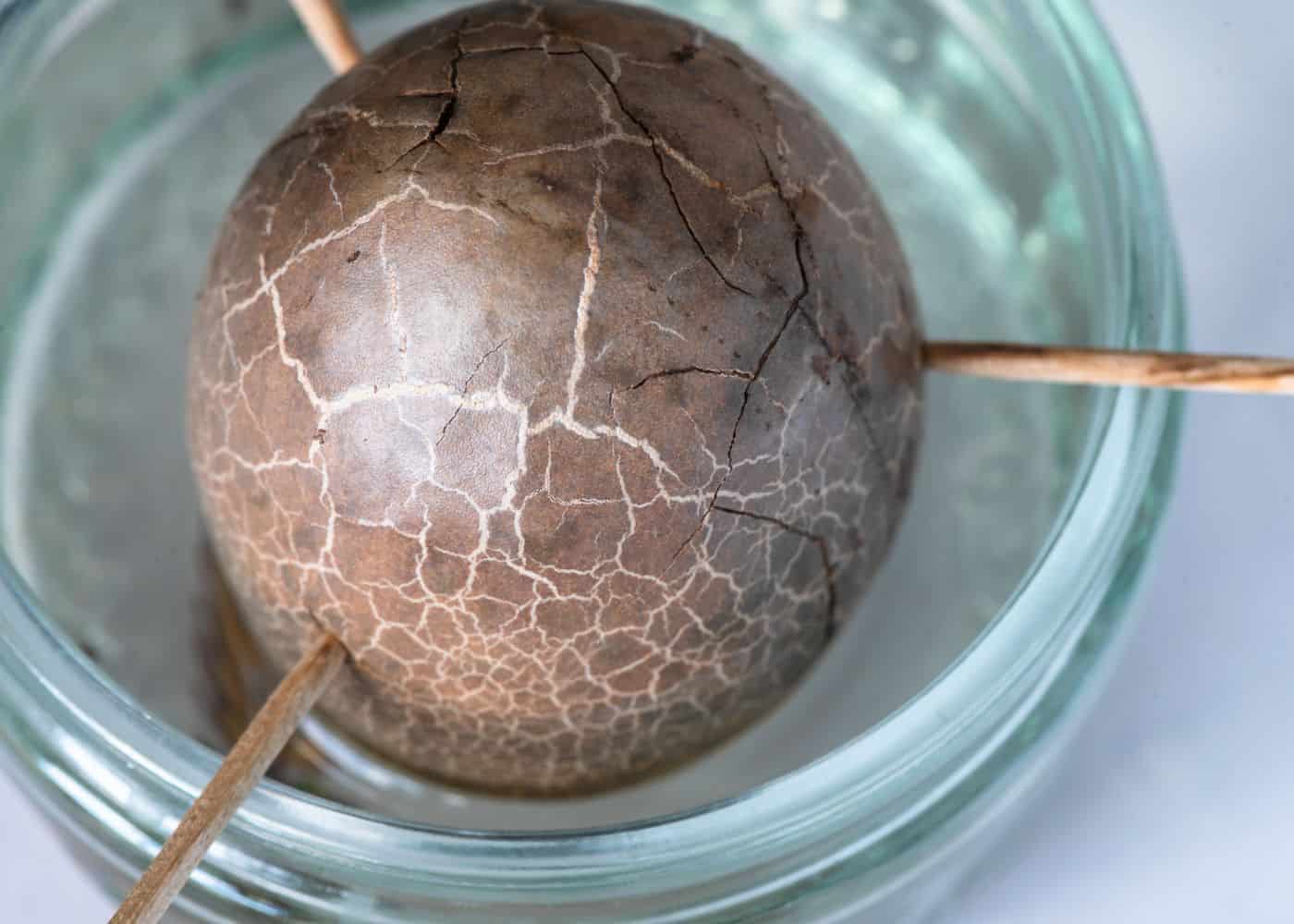
Planting the seed
Growing an avocado tree from seed is a fun and rewarding project that can be done in just a few steps. Start by selecting an avocado pit with no cracks or blemishes, then rinse it off to remove any residue. Next, use three toothpicks to suspend the pit over a glass of water so that half of it is submerged. Change out the water every two days until you see roots emerging from the bottom of the pit (this could take up to six weeks). Once there are several inches of root growth, carefully transfer your new plant into a pot filled with soil and give it plenty of sunlight and warmth.
Caring for the tree
To ensure your avocado tree grows healthy and strong, make sure to provide adequate light and moisture. Place your potted tree near a sunny window or outdoors if possible, but avoid direct sunlight during midday hours as this can cause sunburn on leaves. Water regularly – about once per week – making sure not to overwater as this can lead to root rot. Feeding monthly with fertilizer will help promote healthy growth too.
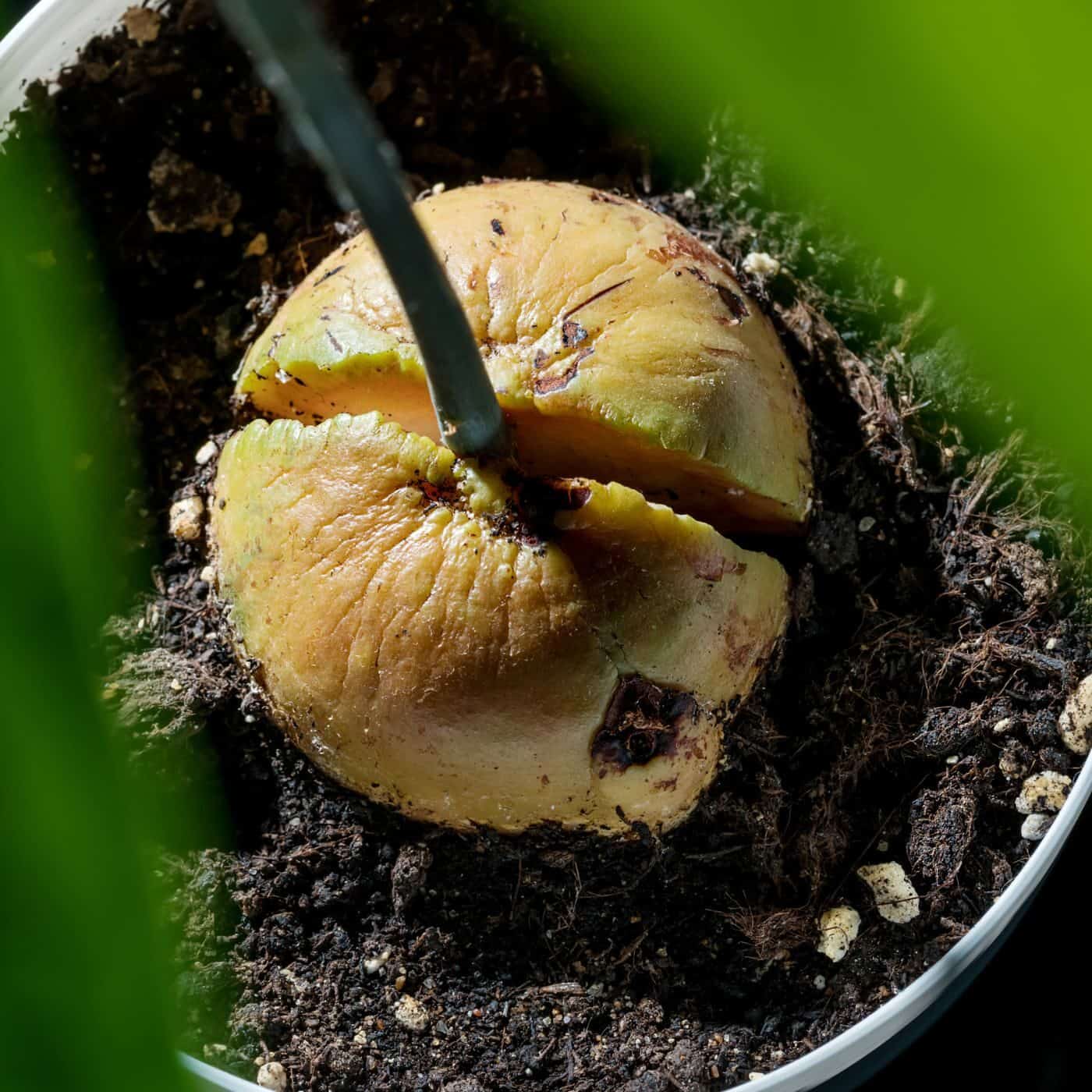
Repotting your seedling tree
As your avocado tree continues growing larger each year, you’ll need to repot it into progressively larger containers every springtime season when temperatures begin warming up again outside. When repotting, choose pots made from terracotta or plastic materials since these are better at retaining moisture than other types like ceramic or metal pots which tend to dry out quickly in hot weather conditions. Additionally, always make sure there are plenty of drainage holes at the bottom before filling with soil mix designed specifically for cacti/succulent plants such as those found in garden centers or online stores selling gardening supplies.
When it comes to harvesting avocados, the timing will depend on your geographic location and the climate conditions of that area. Generally speaking, you can expect to harvest them between late summer and early winter. To ensure that you don’t damage any branches or leaves while picking the fruit, wait until they turn a dark green color and become slightly soft when gently pressed against your palm. When ready, use scissors instead of your fingers to cut them off from the branch onto the ground below in order to avoid dropping them accidentally.
By following these steps, you can easily grow your own avocado tree from a seed and watch it grow into a beautiful addition to your home. Now let’s get started with planting the seed.
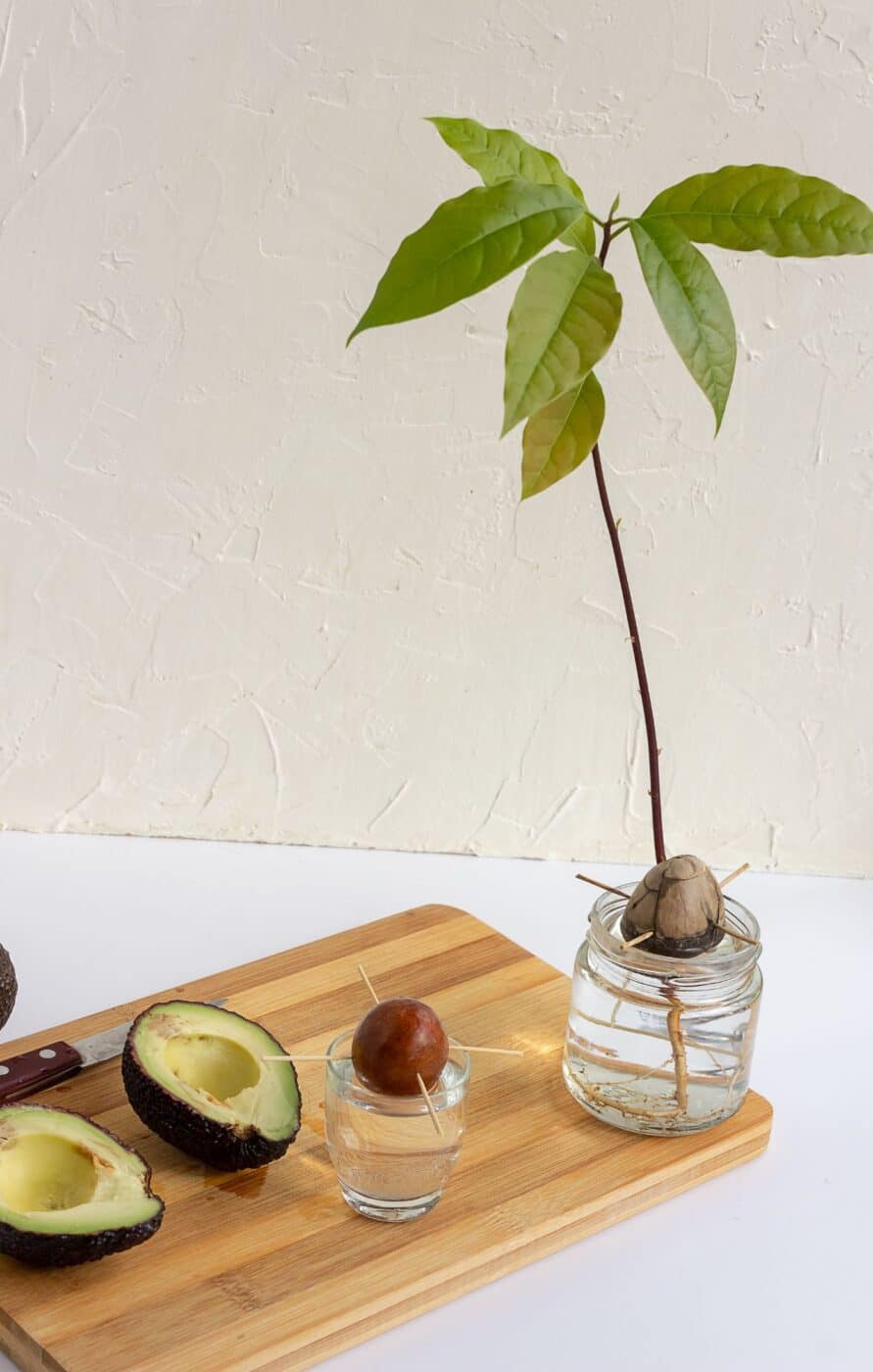
Planting the seed
Planting an avocado seed is a fun and rewarding project that can bring you delicious avocados for years to come. To get started, you’ll need a pot with drainage holes, some potting soil, and water.
Begin by filling the pot with soil up to about two inches from the top of the container. Make sure to use good quality potting soil specifically designed for growing plants in containers; regular garden soil won’t work as well because it doesn’t have enough nutrients or air pockets for proper root growth.
Once your pot is filled with soil, take your avocado seed and carefully place it on top of the dirt so that one end is pointing up and one end is pointing down. The pointed end should be facing upwards toward the sky while the flat end should be facing downwards into the dirt. Gently press down on either side of the seed until it’s just barely covered by a thin layer of dirt – this will help keep moisture in without suffocating your new plant.
Now comes the time to water. You want to make sure not to over-water or under-water your avocado tree; too much water can cause root rot while too little can stunt its growth or even kill it off completely. A good rule of thumb when watering an avocado tree is to give it just enough so that all of its roots are moist but not soggy – this usually means giving it around 1/2 cup every other day during warmer months and less often during cooler months (about once per week). If you’re unsure if your tree needs more water, stick your finger into the dirt near its base – if there’s still moisture present then no additional watering is necessary at this time.
Finally, place your newly planted avocado tree somewhere where it will receive plenty of indirect sunlight throughout most days – typically east-facing windowsills are ideal spots for indoor trees since they don’t get direct sun which could burn delicate leaves. With these simple steps followed correctly, you’ll soon have yourself a thriving little avocado tree ready for harvesting delicious fruits year after year.
After planting the seed, it’s time to focus on providing the best care possible for your avocado tree – let’s take a look at what that entails.
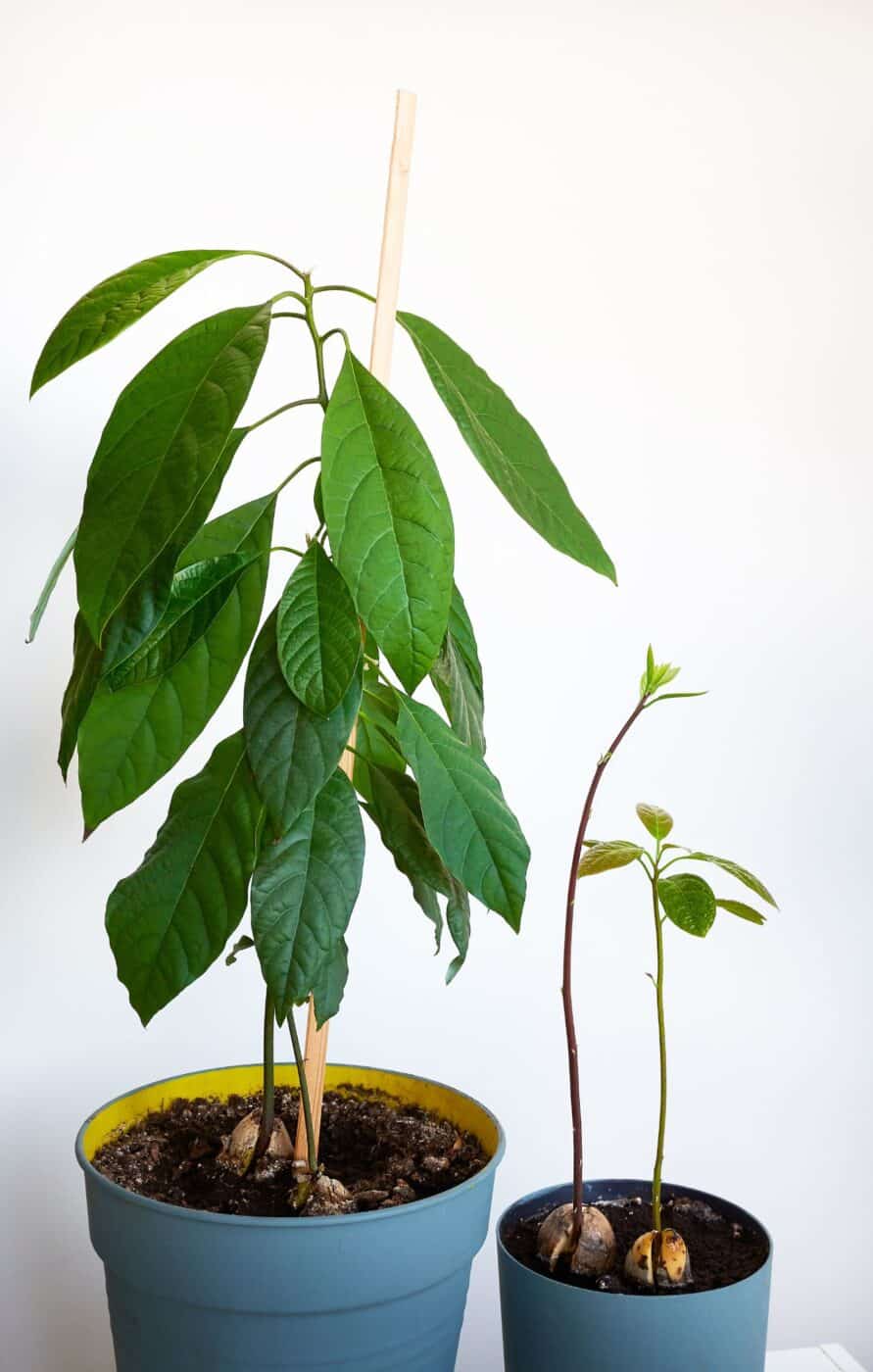
Caring for the tree
Watering
Water your avocado tree regularly, making sure the soil is moist but not soggy. Depending on the climate and season, this could mean watering every few days or once a week. If you’re unsure if it needs water, stick your finger in the soil up to the first knuckle; if it feels dry, give it some water.
Pruning
Pruning helps keep your avocado tree healthy and looking its best. Start by removing any dead branches or twigs that are sticking out at odd angles from the main trunk of the tree. Then look for any branches that are crossing over each other or growing too close together and prune those back as well. Finally, remove any suckers (small shoots) coming off of the base of the trunk so they don’t take away energy from fruit production later on down the line.
Fertilizing
Fertilize your avocado tree with an all-purpose fertilizer twice a year—once in early spring and again in late summer/early fall when temperatures start to cool off slightly—to help promote growth and fruiting potential. Make sure to follow package instructions for dosage amounts since applying too much can damage plants.
With proper care, your avocado tree can thrive and grow; however, it will eventually outgrow its current pot. In the next section, we’ll discuss how to repot your tree for continued growth.
Repotting an avocado tree
Repotting an avocado tree is a necessary step in its growth and development. As the tree grows, it will need more space to accommodate its roots. It’s important to repot the tree into a larger pot before the roots become too crowded and begins to circle around inside the existing pot.
When choosing a new pot for your avocado tree, make sure that it has drainage holes at the bottom and is large enough for your growing plant. A good rule of thumb is to choose one that’s two inches wider than your current pot size. The material of the new pot can be either plastic or clay; both are suitable options as long as they have adequate drainage holes at their base.
To transfer your avocado tree from its old pot into its new home, start by gently removing it from its current container with care not to damage any of its delicate roots in the process. Once you have removed it from its original container, place some soil in the bottom of your new planter before adding water until it reaches about halfway up on the sides of the root ball (the mass of dirt surrounding all parts of the root).
Place this mixture carefully into your chosen planter and fill in any gaps between soil and edges with additional soil mix if needed. Finally, give your newly potted avocado tree plenty of water so that all parts are evenly moistened but not soggy or wet—this should help ensure healthy growth.
Once you have successfully transferred your avocado tree into a larger planter, make sure to monitor how much water you give it each week; too little or too much can cause problems such as leaf yellowing or even death if left unchecked for too long. Additionally, try moving plants out onto balconies during warmer months when possible so they can get plenty of sunlight without becoming overheated indoors—this will help them thrive better overall.
Finally, remember that repotting an avocado tree isn’t something you need to do every year; it should only be considered when the pot is overcrowded. Doing so helps ensure healthy growth over time while also giving plants room to breathe freely without being cramped up against other containers nearby, allowing them access to light and airflow which ultimately aids successful fruiting later down the line.
Once the avocado tree has outgrown its current pot, it’s time to repot it into a larger one. With proper care and attention, you’ll soon be able to enjoy the sweet rewards of harvesting your own avocados.
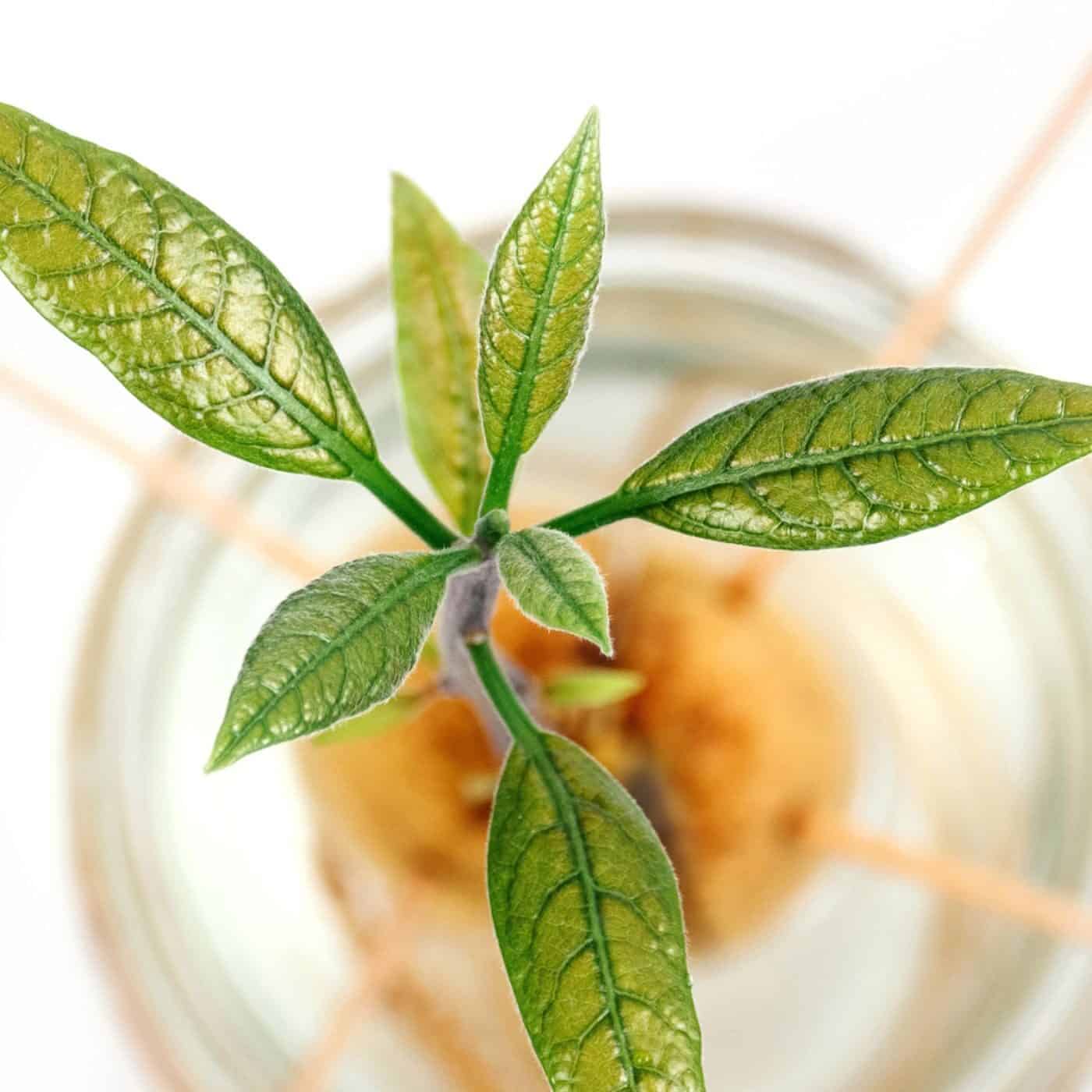
Harvesting avocados
When it comes to harvesting avocados, timing is key. You want to make sure you pick them when they’re ripe but not overripe, as this will affect the taste of the avocado.
The best way to tell if an avocado is ready for harvest is by looking at its color and feel. Ripe avocados should have dark green or purple-black skin with some yellow patches near the stem end. The flesh should give slightly when gently squeezed but shouldn’t be too soft or mushy. If you’re unsure about whether an avocado is ripe enough, cut one open and check the color of the flesh inside – it should be light green or yellowish in color without any brown spots or discoloration.
When picking avocados from your tree, use caution so as not to damage either yourself or the tree branches while reaching up high for those hard-to-reach fruits. Gently twist each fruit off its stem using both hands; don’t pull on it as this could cause damage to both yourself and the tree branch where it’s attached. Once picked, store unripened avocados in a cool dry place away from direct sunlight until they reach their desired ripeness level before eating them (this usually takes around 3-5 days).
If you live in a warm climate, you can plant your avocado tree outdoors. Growing your tree outdoors is likely the only way it will get enough sunlight to produce fruit reliably. Indoor trees are generally too small and don’t get enough light to create enough energy to flower and fruit.
If you intend to store harvested avocados for later use, ensure they are fully ripe before wrapping each one individually in plastic wrap and placing them into airtight containers such as Tupperware boxes. This will help preserve their freshness for longer periods of time (up to two weeks). If you need the avos sooner rather than later, keep them stored at room temperature away from direct sunlight until ready for consumption. Once sliced open, however, these must be consumed within 24 hours or else they may start going bad due to oxidation caused by exposure to oxygen in our atmosphere.
Once your avocados have ripened, it’s time to harvest them and enjoy the fruits of your labor. Now that you’ve mastered harvesting, let’s look at how to best savor the deliciousness of your homegrown avocados.
Enjoying your avocados
From guacamole to avocado toast, there is no shortage of recipes you can make with fresh avocados. Here are some ideas for how to enjoy your homegrown avocados:
Guacamole
The classic way to enjoy avocados. Start by mashing up two ripe avocados in a bowl, then add diced tomatoes, onion, garlic powder, cilantro, and lime juice. Mix everything together until it’s combined and season with salt and pepper to taste. Serve the guacamole with chips or use it as a topping on tacos or burritos.
Avocado toast
This simple yet delicious dish is perfect for breakfast or lunch. Slice avocado into thin slices then spread them onto lightly-toasted bread of your choice (rye works great). Top the toast off with some crumbled feta cheese and freshly cracked black pepper for added flavor. Enjoy your avocado toast alone or pair it with scrambled eggs for a complete meal.
Smoothies
Avocado makes an excellent addition to smoothies because its creamy texture helps thicken the drink and gives it a creamy texture. Try blending one banana, one cup of spinach leaves, half an avocado, plus almond milk together until smooth – this will make enough for two servings, so share it with someone special. You can also add other fruits like mangoes or strawberries if desired.
Salads
Make any salad more exciting by adding sliced avocado pieces on top – they’ll give each bite extra creaminess without overpowering the flavors of other ingredients like lettuce or tomatoes. For example try making a Mexican-style salad by combining romaine lettuce leaves along with black beans, corn kernels, red onions, and cherry tomatoes; drizzle over some olive oil-based dressing before finishing off the dish with slices of ripe avocado on top.
Avocado adds a crunchy texture when used inside sushi rolls. Simply slice one into thin strips before layering them onto nori sheets along with cooked rice and other fillings such as cucumber slices or smoked salmon pieces. Roll everything up tightly using bamboo mats before slicing it into individual portions ready to serve.
FAQs about how to grow an avocado tree from seed
How long does it take to grow an avocado tree from a seed?
It typically takes 8-12 weeks for an avocado seed to sprout and begin growing. After that, it can take anywhere from 4-6 years for the tree to bear fruit depending on the variety of avocado.
It is important to provide adequate sunlight, water, and nutrients during this time in order to ensure healthy growth. Additionally, pruning may be necessary as the tree matures in order to promote strong branching and fruiting. With proper care and attention, you can enjoy your own homegrown avocados.
Do I need 2 avocado trees to get fruit?
No, you do not need two avocado trees to get fruit. Avocado trees are self-pollinating and can produce fruit with just one tree. However, having two trees will increase the amount of fruit produced since they will be able to pollinate each other. If you want a larger harvest of avocados, it is recommended that you plant more than one tree in your garden or yard.
How do you germinate an avocado seed fast?
Germinating an avocado seed is a relatively simple process. Start by filling a bowl with lukewarm water and submerging the seed in it. Change the water every two days to keep it fresh and encourage germination.
After about five days, you should see the root beginning to emerge from the bottom of the seed. Once this happens, transfer your seed into a pot filled with moist soil and place it in indirect sunlight for optimal growth conditions. Keep an eye on your plant’s progress as it continues to grow over time.
Which end of the avocado seed goes down?
The answer to the question of which end of an avocado seed goes down is not a straightforward one. Depending on the type of soil and climate, either end can be planted facing downward. Generally speaking, it is best to plant the pointed end downwards as this will allow for better drainage and air circulation around the roots.
However, in certain conditions such as sandy or loamy soils with higher moisture levels, planting the flat side down may be more beneficial for optimal root growth. Ultimately, experimentation and observation are key when determining which orientation works best for your particular environment.
Before you go…
With the right care, you can enjoy watching your tree grow and eventually harvesting your own avocados. Whether you’re new to gardening or have been growing plants for years, growing an avocado tree from seed is a great way to add some greenery and flavor to your life. Give it a try today – you won’t regret it.
Resources
- Tips for growing avocado trees indoors
- Everything you need to know about planting avocado trees
- How to fertilize an avocado tree
- How to prune an avocado tree
References
- Jukes, J. (2017). How to Grow Your Avocado. CreateSpace Independent Publishing Platform.
- Schaffer, B. A., Wolstenholme, B. N., & Whiley, A. W. (2013). The Avocado: Botany, Production and Uses (pp. 61-63). CABI.
- How to Grow Your Own Avocado Tree from the Seed
Need more info?
Are you interested in learning more about how to grow an avocado tree from seed? Here are our best articles about it!


